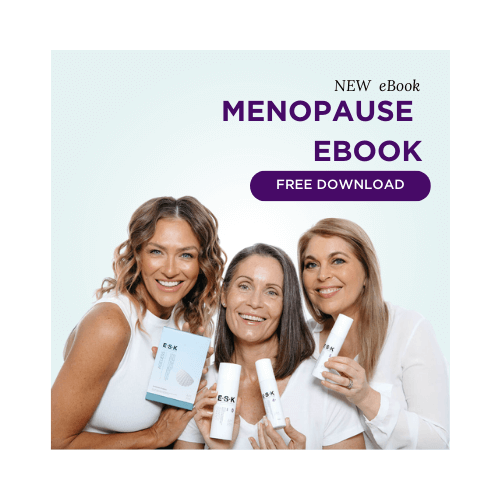
The ESK blog
New To Active Ingredients? Here Are Some Of The Things You May Experience
20 July 2021
Dana Raffoul
So you’ve decided it’s time to take your skin care up a notch but you’re not sure what to expect or you’re worried that after starting things aren’t as you expected?
Don’t worry you’re not alone. While most of you will start a new skin care regime without missing a beat, here are our tips for what is normal, what needs a change and what should be stopped.
First a disclaimer: When you look at the ingredient list on a product, there are usually more than 6 ingredients and sometimes more than 30 or 40. Active ingredients usually make up a small minority of those ingredients.
We work hard to try and keep potentially irritating ingredients out of our products (and we expect that to some degree all manufacturers do), but with the variety of skin types and conditions out there, there is always a chance that a non-active ingredient is one that your skin might react to. What we will focus on below, is the most common reaction to active ingredients…
So let’s dive right in.
First of all – what you have been told about Vitamin A is true, it is a great ingredient for most users, skin types and concerns. And in the case of Retinoic acid and Retinol, they can cause irritation, peeling and redness. Retinal, the form of Vitamin A that ESK uses has all the benefits of Vitamin A but it is very gentle. So if you do experience some discomfort, it is very unlikely to be the ESK Vitamin A products.
What to expect by skin condition:
ANTI-AGEING:
General Settling in Period: This is a period where you may experience a couple of spots (small pimples), or few small dry patches (say two small areas of slightly flaky skin).
They may appear some time in the first month of use and last about 4 days (usually not more than a week). We call it a “settling in” period because it happens when starting out and passes quite quickly, but also because scientists aren’t exactly sure why it happens.
If you see these and they don’t get worse, stick it out for a week, they will most likely pass.
Tingling from Alpha Hydroxy acids: A tingling sensation is often associated with Alpha Hydroxy (AHAs) acids (like Glycolic and Lactic Acids) which exfoliate the skin. This is especially the case when paired with Vitamin A. A little tingle is fine, but stinging isn’t – even so, the sensation shouldn’t last too long (a few minutes).
If after application of AHAs you feel stinging, you can wash them off and the sensation should go. For most people our skin can get used to Hydroxy acids quite quickly. Sometimes we may need to decrease frequency and dosage to get the skin used to it. But for those of you with very sensitive skin or Rosacea, you may never get used to them.
Burning, itching, dryness and bumps from Vitamin C: Vitamin C is a great anti-ageing ingredient, particularly when it comes to managing signs of sun induced ageing (wrinkles, leathery skin, pigmentation), but for some it can result in some discomfort.
If you have sensitive skin, we recommend patch testing and only using only a little bit first time around. (Washing it off often won’t reduce the sensation – only time will).
If you do experience burning or itching (which persists), dryness or bumps these are often the signs that your skin isn’t a fan of Vitamin C. While tolerance can be built, it is a much slower process than with AHAs.
ACNE:
Purging: When starting a new acne regime, it is quite common for things to get worse before they get better with users initially experiencing an increase in breakouts.
Again, scientists aren’t exactly sure why this happens, but the current theory is that this happens as the rate at which skin cells turnover increases….
This can last between 1 and 4 weeks (depending on the severity of the acne). That can be alarming – because you’re using the skincare to get rid of acne! Here you need a little trust and patience. While there are some ingredients that can exacerbate acne, A well formulated acne regime shouldn’t have any of those (comedogenic) ingredients and the purging will pass….
Dryness: Acne is a skin condition associated with a compromised skin barrier function, which also means that the skin doesn’t retain moisture so well.
While that is often hidden with the oiliness of acne prone skin, it can become evident after starting treatment. Dry skin will slow your progress, so if you are using ingredients that dry the skin, ease up on those and perhaps use a non-foaming creamy cleanser until your skin barrier function improves and the dryness goes (most acne treatments have ingredients that will improve the skin barrier).
Irritation: A few acne targeting ingredients which may otherwise cause a little tingle can cause irritation, especially if your skin has become a little dry. The most common culprits are AHAs. If that happens to you, wait until your skin settles down before re-introducing them.
PIGMENTATION:
Help my pigmentation has become more obvious! Sometimes when starting to use ingredients to help with pigmentation, the first change might make it look like things are getting worse.
As long as you are using a daily sunscreen with good UVA protection, it’s likely that “tan” in your skin has started to reduce before the pigmentation spots have started to lighten.
Again, patience will be your friend. Those pigmented spots will take some time to lighten – while some ingredients start working quite quickly, some of the most effective ingredients can take 2 – 3 months to start working.
RED FLAGS:
It can be hard to know which of your experiences are ones that are “normal” and which will pass with a little time.
But here are some of the red flag experiences, where you should stop using products and seek help: Intense redness, sensitivity (to the point of discomfort) and dryness or tightness across the majority of your face.
Now that we have got you worried about all the things that could happen to you, know that the overwhelming majority of users are either fine from the get go or need a small tweak to get to happy.
When we do experience issues, they are normally related to settling in or purging (for acne) and always pass quickly.
And apart from some initial tingling, our two most potentially irritating products (Reverse C Serum and Smooth Serum) are well tolerated in all but 0.2% and 0.1% of cases respectively…. And most of those users knew that they had sensitive skin…
So go on, dive in and let us know how you go!









